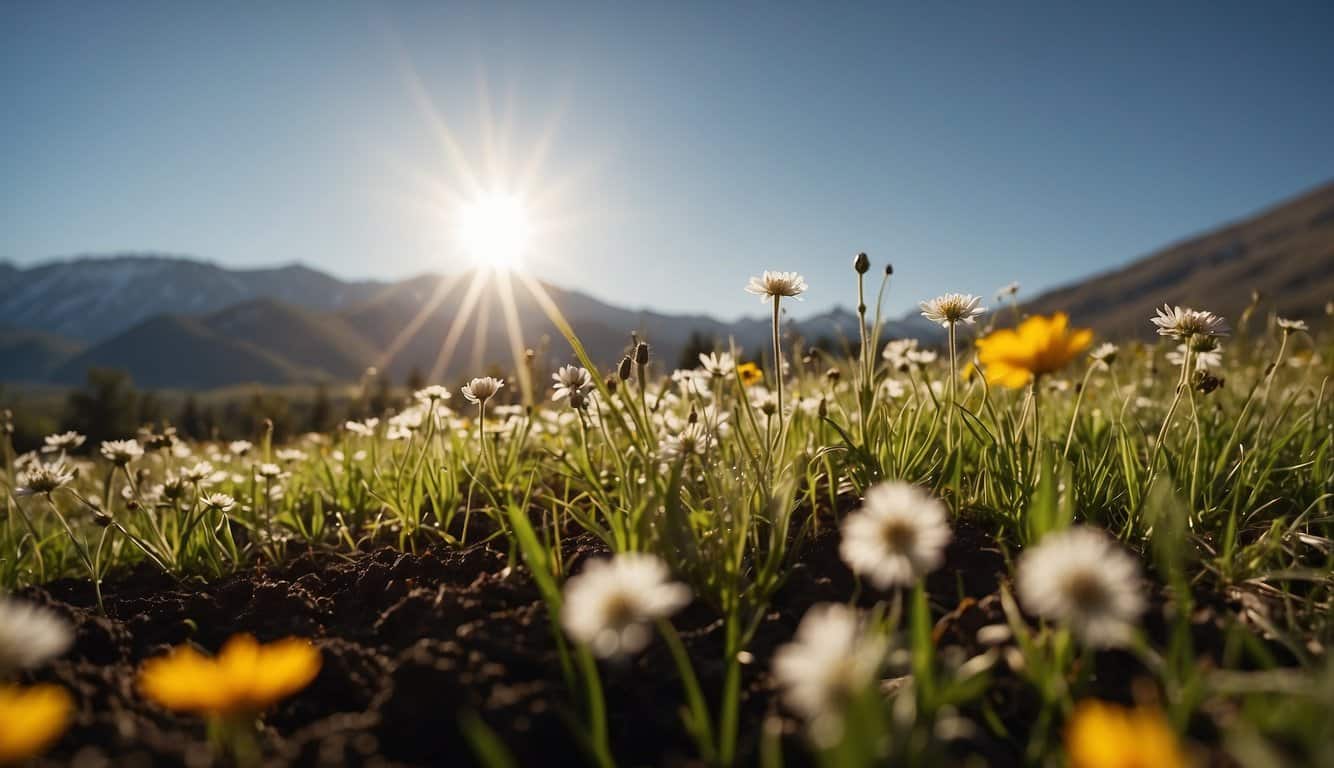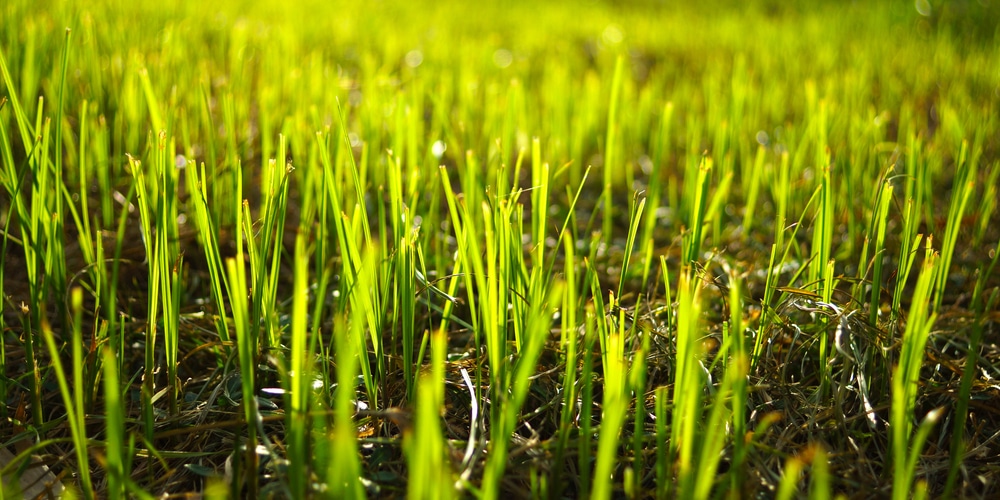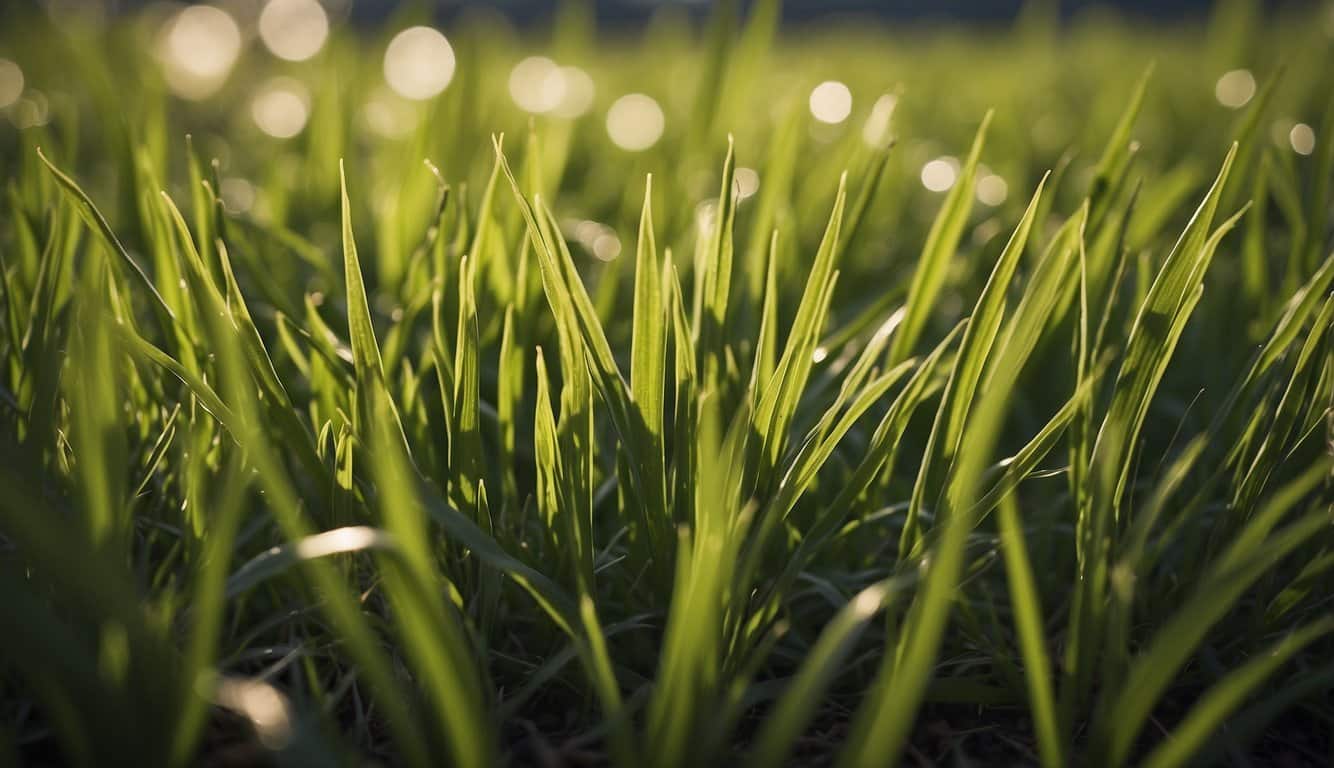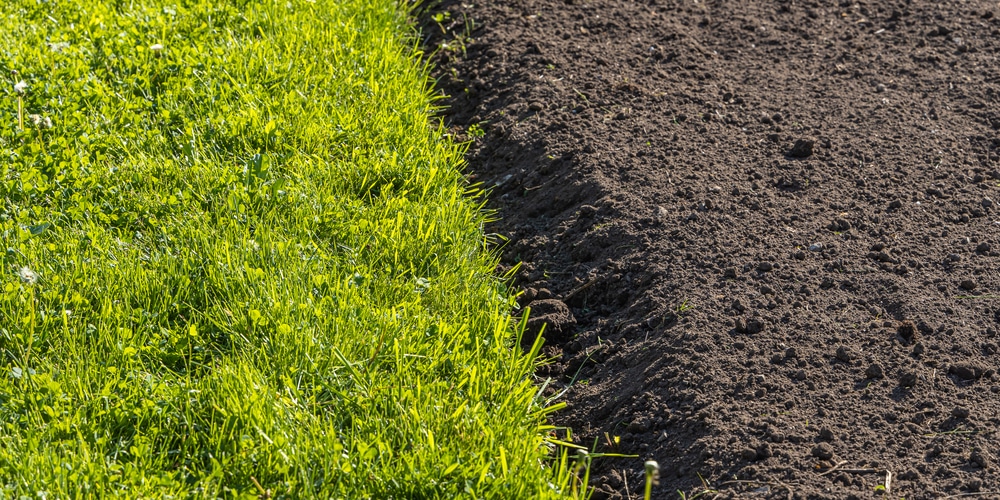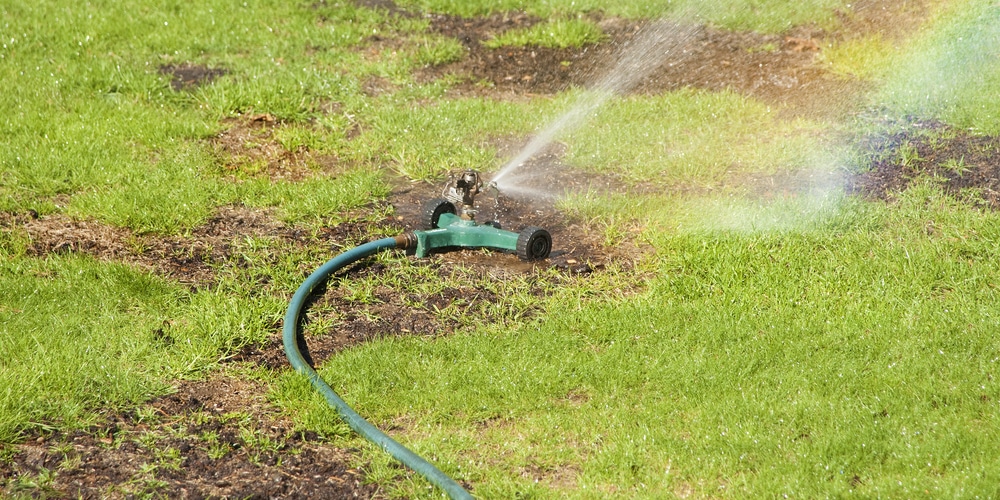| Question | When to Plant Grass Seed in Utah? |
|---|---|
| Answer | Early fall (September to early October) and late spring (mid-April to early May). |
| More Info |
|
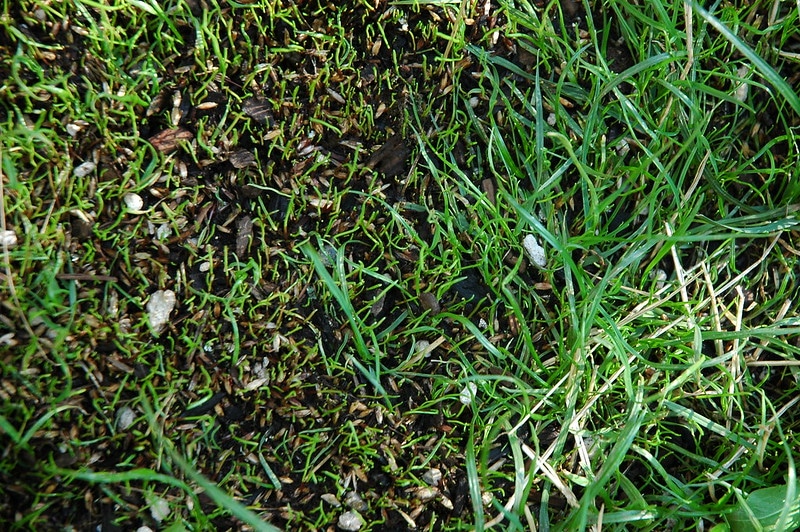
In Utah, the optimal times for planting grass seed depend on the state’s varied climate zones, but generally, early fall and late spring are the best periods.
For fall planting, aim for September to early October. This timing allows grass seeds to benefit from the warm soil temperatures, which help with germination, and the cooler air temperatures, which are ideal for growth. Fall planting also takes advantage of seasonal rainfall, reducing the need for manual watering.
Spring planting should occur from mid-April to early May, after the last frost has passed and when soil temperatures have reached at least 50°F. While spring offers a good opportunity for seeding, especially for repairing winter damage, the potential for summer heat and competition from weeds can make fall planting more advantageous.
Utah’s Growing Seasons
Utah’s climate presents a distinctive calendar for gardeners and landscapers, particularly due to its varying elevation and temperature zones.
From the cold winters to the warm summers, knowing the state’s growing seasons is key to seeding a successful lawn.
Utah is divided into multiple planting zones, each with its own unique timeline for seeding:
- Zone 4: Seed by mid-September
- Zone 5: Seed by early October
- Zone 6: Seed by mid-October
- Zone 7: Seed by late October
- Zone 8: Seed by early November
- Zone 9: Seed by late November
The state experiences a predominantly dry climate, with fluctuations that can influence lawn establishment.
In Utah, cool-season grasses such as Kentucky bluegrass and fescues thrive best when soil temperatures are conducive to germination.
April and May present a prime window for sowing grass seed. During this period, soil temperatures reliably warm, favoring seed germination.
Fall Planting Window:
Late summer to early fall is typically optimal for planting. Warm soil from summer months coupled with cooler, but not yet freezing, temperatures in early fall create ideal conditions for seed germination.
It is crucial to plant:
- At least 4-6 weeks before the first expected frost to ensure the grass can establish.
Best Times to Plant Grass Seed in Utah
Choosing the right time to plant grass seed in Utah is crucial for establishing a healthy lawn. It ensures optimal growth and sustainability through various seasons.
Spring Planting
In Utah, spring offers a window for seeding cool-season grasses, yet timing is delicate.
One should aim to plant when the threat of a hard frost has passed to prevent damage to new seedlings, which generally means waiting until April or May.
During spring, soil moisture levels are typically higher, which can aid in germination, but cooler nights and unpredictable weather can hinder growth.
Gardeners should be prepared to provide extra care and attention if unexpected frost or a dip in temperatures occurs after seeding.
Fall Planting
Fall is often considered the ideal season for planting grass seed in Utah for cool-season varieties like Kentucky bluegrass or fescues.
Planting in late summer to early fall takes advantage of the warm soil, which encourages faster seed germination.
The ideal timing for seeding in fall is approximately 45 days before the first expected frost to allow the grass to establish.
Here’s a simple guideline for seeding times by Utah’s frost zones:
- Zone 4: Seed by around September 21.
- Zone 5: Seed by around October 13.
- Zone 6: Seed by around October 17.
- Zone 7: Seed by around October 29.
- Zone 8: Seed by around November 7.
- Zone 9: Seed by around November 25.
Types of Grass for Utah Climates
Utah’s diverse climate presents unique challenges for lawn enthusiasts. The right choice of grass seed is pivotal for a thriving lawn due to the state’s variable weather conditions, which range from cold winters to hot summers with occasional droughts.
Cool-season grasses are generally well-suited for Utah’s climate. Two prevalent types are:
- Kentucky Bluegrass: Offering a fine texture and deep green color, this grass seed is widely adaptable, especially in regions with cooler temperatures. It can endure cold winters and retains its luscious appearance with proper maintenance.
- Fine Fescue: A group comprising hard, sheep, chewings, and creeping red varieties, fine fescue is particularly shade-tolerant and drought-resistant. It requires less water, a boon given Utah’s sometimes unpredictable precipitation patterns.
Turf-type Tall Fescue stands out as an excellent choice for starting a new lawn due to its capacity to form a dense turf, making it a durable option. However, it doesn’t mix well with other grass types and is ideal for establishing a lawn from scratch rather than overseeding.
For planting grass seed in Utah, consider the following timeline based on the USDA hardiness zones in the state:
| Zone | Optimal Planting Timeframe |
|---|---|
| 4 | Before September 21 |
| 5 | Before October 13 |
| 6 | Before October 17 |
| 7 | Before October 29 |
| 8 | Before November 7 |
| 9 | Before November 25 |
Soil Preparation for Planting Grass Seed
Proper soil preparation is crucial when planting grass seed in Utah to ensure a lush, healthy lawn. The process involves a series of steps tailored to create an ideal growing environment for the new grass.
Step 1: Test the Soil
Firstly, one should test the soil’s pH level; grass typically thrives in a pH range of 6.0 to 7.5. If necessary, apply lime to raise the pH or sulfur to lower it according to the test results.
Step 2: Clear the Area
Clear the site of debris, rocks, and existing vegetation. This can be done using a shovel or a sod cutter for larger areas.
Step 3: Loosen the Soil
Grass seeds need loose soil for proper root development. They should till the soil to a depth of 4 to 6 inches, either manually with a rake for small areas or with a rototiller for larger expanses.
Step 4: Improve Soil Quality
Revitalizing the soil with nutrients is vital. They should integrate organic matter, such as compost or well-rotted manure, which will enhance the soil’s fertility and water-holding capacity. Apply a 2 to 4-inch layer and mix it well with the existing soil.
Step 5: Smooth and Level
After tilling, they need to remove any remaining debris and level the area. Dragging a large piece of cardboard or a landscape rake across the surface can help achieve a smooth, even grade.
Step 6: Moisture Control
Before sowing, and after, the soil should be kept slightly moist, which aids in seed germination. They should not, however, saturate the soil as this can lead to seed displacement and fungal diseases.
Table 1: Soil Amendment Measurements
| Amendment | Application Rate |
|---|---|
| Lime | 50 lbs per 1,000 sq ft (if pH is low) |
| Sulfur | 5 lbs per 1,000 sq ft (if pH is high) |
| Compost | 1–3 inches over area |
Ongoing Care and Maintenance
After successfully planting grass seed in Utah, maintaining the health and appearance of the lawn requires consistent care.
Homeowners can follow a strategic maintenance plan to ensure the longevity and vibrancy of their grass.
Watering:
- Newly seeded lawns require frequent, light watering to keep the soil consistently moist.
- One should aim for at least once daily or as needed to prevent drying.
- Established lawns benefit from deeper, less frequent watering—about 1 to 1.5 inches per week, either from rain or supplemental watering.
Mowing:
- Begin mowing when the grass reaches about 3 inches in height.
- Maintain a height of 2 to 3 inches for cool-season grasses to encourage strong root development.
Fertilization:
- Apply a starter fertilizer at seeding and continue with regular feedings every 6 to 8 weeks during the growing season using a balanced lawn fertilizer.
Aeration and Overseeding:
- Annually aerate to alleviate soil compaction and enhance water and nutrient absorption.
- Conduct overseeding if necessary in the fall to fill in bare spots and improve lawn density.
Weed Control:
- Implement pre-emergent herbicides in the spring to prevent weed seeds from germinating.
- Use post-emergent herbicides for any visible weeds, taking care not to harm the grass.
Pest and Disease Management:
- Inspect regularly for signs of pests or disease.
- Apply appropriate treatments as needed, following environmental best practices.
Frequently Asked Questions
When it comes to ensuring a lush lawn, knowing the specifics for seeding in Utah’s climate can make all the difference. These frequently asked questions cover the essential timing, techniques, and care needed for seeding effectively.
What is the optimal time of year to seed a lawn in Utah?
The optimal time to seed a lawn in Northern Utah typically spans from late summer to early fall.
This period offers warm soil temperatures that encourage faster seed germination.
Which season is most suitable for sowing grass seed in the climate of Utah?
Fall is widely regarded as the most suitable season for sowing grass seed in Utah.
Planting at least 45 days before the first expected frost gives the grass seed ample time to establish.
Can one sow grass seed in Utah outside of the recommended planting times?
One can sow grass seed outside the recommended times, but they should be prepared for less optimal germination and growth due to potentially unfavorable weather conditions.
What type of grass seed thrives best in Utah’s varied climate?
Cool-season grasses such as Kentucky bluegrass and fescues are well-suited for Utah’s varied climate, thriving in the cooler temperatures of spring and fall.
How does one properly prepare the soil for planting grass seed in Utah?
Proper soil preparation involves dethatching, aerating, and ensuring the soil is loose for good seed-to-soil contact.
These steps are crucial for successful seed germination and lawn establishment.
What are the proper steps for lawn care after seeding in the Utah region?
After seeding, regular watering is necessary to prevent the seeds from drying out.
Maintaining consistent moisture without over-saturating is key for the germination and early growth of the new grass.
Last update on 2025-04-28 / Affiliate links / Images from Amazon Product Advertising API



